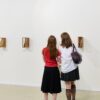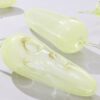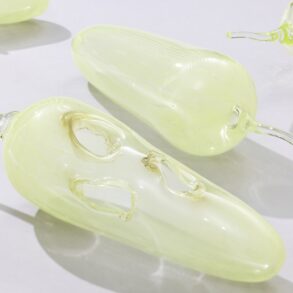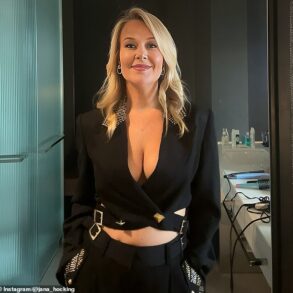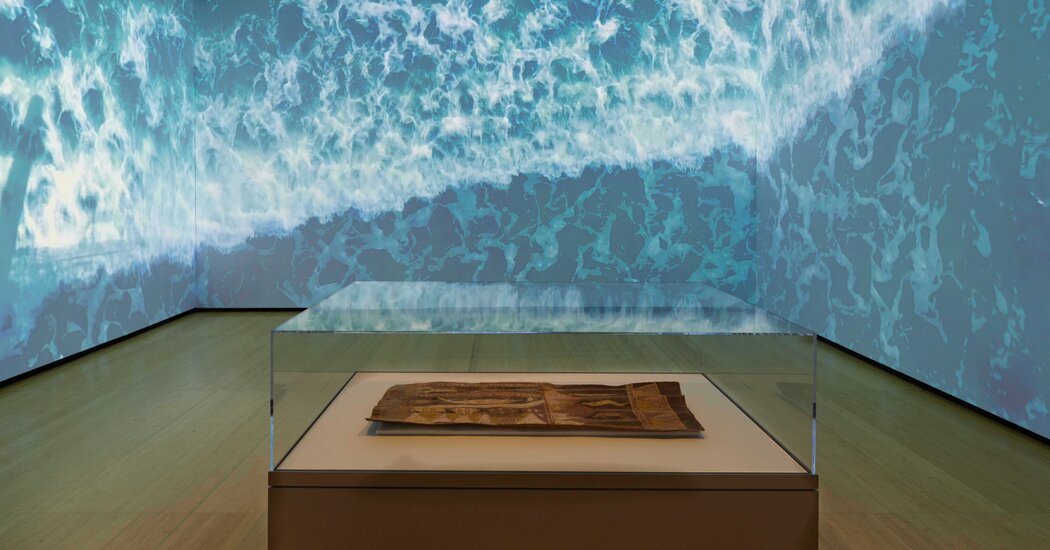
The tension between sacred mysteries that must be shielded from outsiders and those that can be revealed animates an exhibition at the Asia Society.
The Aboriginal art of northeast Arnhem Land in Australia is both ancient and recent. For thousands of years, the Yolngu people of this remote, culturally rich region have been painting in the sand and on their bodies, rendering features of the landscape and legends of their ancestors into sacred designs.
But those drawings were ephemeral. The creation of a sellable, commodified art for outsiders — paintings made with human-hair brushes and traditional ochers that are stabilized with fixatives on a support of eucalyptus bark — began in 1935 through contact with white Australians.
In less than a century, this art movement has burgeoned, and the constraints imposed by clan elders have adapted to changing times and an accelerating market. The traditional edicts — only men could paint and only natural materials could be used — have been loosened, especially in the admission of women, who are now some of the most renowned Yolngu artists. But almost all of Yolngu art, which is supported and disseminated through the Buku-Larrngay Mulka Center in the small community of Yirrkala, about 450 miles east of Darwin, is still made from ocher pigments of ground stone.
One remarkable treasure included in “Madayin: Eight Decades of Aboriginal Australian Bark Painting From Yirrkala,” a ravishing show at the Asia Society, is the very first Yolngu eucalyptus bark painting. Depicting animals and one male figure, all crosshatched with geometric patterns, it was created in 1935 by Wongu Munungurr, a clan leader, as a thank-you gift for Donald Thomson, a white Australian anthropologist who interceded in 1933 to ease tensions after the killings by tribesmen of five Japanese fishermen and an Australian constable. Along with later pieces made for Thomson, and other Aboriginal pieces that he collected in the ’30s and ’40s, the artwork is housed in the Museums Victoria in Melbourne. The paintings had never left the country before this traveling exhibition and required an official dispensation to do so.
This is the largest display of bark paintings ever mounted in the Western Hemisphere. Most of the 74 pieces, including two videos and 33 newly commissioned works, come from the holdings of the Kluge-Ruhe Aboriginal Art Collection at the University of Virginia, which organized the show along with the Buku-Larrngay Mulka Center.
This post was originally published on this site be sure to check out more of their content

